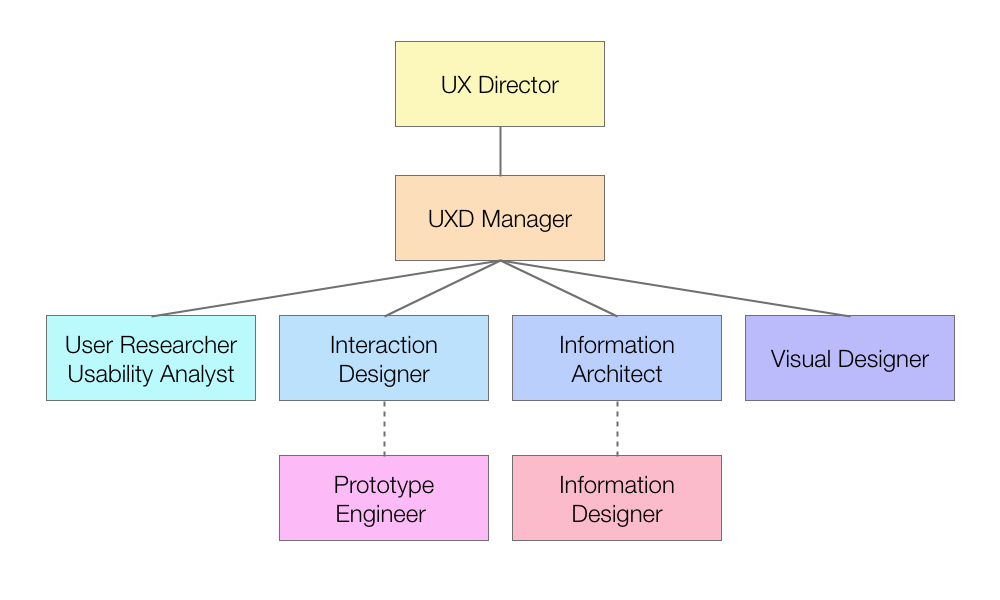A good and organised team represents the key to success. Nowadays we are overwhelmed by various positions and descriptions of UX UI designer tasks (once I have read a humorous blog on the topic of creating a new designer position occurring every 20 minutes), so I have been confused many times.
While researching I have come up with a model in which a UX UI design team might be structured and organized, in my opinion.

UX Director
The director is the lead evangelist for user-centered design in the product organisation. The person in this role is responsible for strategically driving adoption of user-centered design in the product organisation, and helping product management plan long-term research objectives and projects. The director may also be responsible for evangelising user-centered design across multiple product lines and business units.
UXD Manager
The manager is responsible for ensuring that teams working on product features have been given adequate resources. The manager gauges project priority and resource availability, and assigns resources to tasks as appropriate. The manager is also responsible for helping the director and the product management group plan and resource long-term projects.
User Researcher/Usability Analysts
The user researcher/usability analyst functions as the “voice of the user” by determining what users of the product (or of a particular feature) are trying to accomplish, how they conceptualise their work in this area, and their pain points. Then they must represent this information within the product organisation during the ideation and design phases. During the development phase, these contributors assess the usability of the interaction designers’ designs by subjecting them to usability tests. In this way, the usability analyst/user researcher ensures that user needs, limitations, and attitudes are accounted for in the design.
Interaction Designers
The interaction designer determines how the software should work for a feature (or the entire product) and designs the user-system interactions as appropriate. This includes the terminology used in a particular feature or area of the product, where the feature is accessed within the product, the flow of screens associated with the feature, and the controls displayed on the screens. Interaction designers must possess an understanding of the product and its features, the requirements for the new feature created by requirements analysts, and most importantly, the users who will utilize the feature. The interaction designer will most often document the interaction using a combination of functional specifications and lo- or medium-fidelity screen mockups.
Information Architect
The Information Architect designs the presentation of information to facilitate understanding and focuses on the organisation of data – how data is structured from a user’s perspective, as opposed to the system, or technical, perspective.
Visual Designers
The visual designer is responsible for overall look and feel of the software. They create the final user interface based on the interaction designers’ mockups and specifications. If the organisation maintains a user interface style guide, they often maintain this document.
